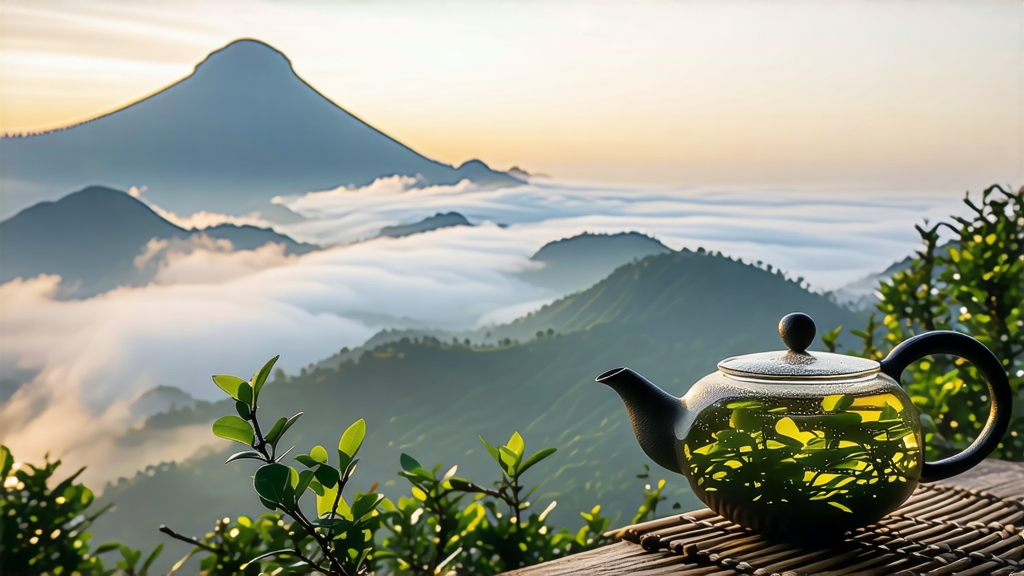
Tucked between the mist-laden cliffs of Dongting Mountain and the vast mirror of Lake Taihu, Biluochun—literally “Green Snail Spring”—has captivated Chinese emperors, poets, and now a new generation of global tea lovers for more than a thousand years. What began as a wild tea picked by Buddhist monks has evolved into one of China’s Ten Famous Teas, prized for its downy silver tips, orchid-like fragrance, and a sweetness so delicate it seems to evaporate on the tongue. This article invites you to journey through the micro-climate, micro-history, and micro-craft that turn a single bud and half-open leaf into the most spiral-shaped green tea on earth.
-
From “Scary Fragrance” to Imperial Tribute
Local legend blames the tea’s original name, Xia Sha Ren Xiang—“Scary Fragrance”—on a tea-picking girl who tucked fresh leaves into her bosom during a sudden mountain storm. The warmth of her skin supposedly released an intoxicating perfume that startled villagers. When the Kangxi Emperor visited Suzhou in 1699, he found the name inelegant and rechristened it Biluochun, referencing both its jade color and the snail-shell curl perfected by Lake Taihu’s cool spring breezes. By the Qianlong era, annual tribute quotas exceeded 300 kilograms, all carried by canal barges to Beijing under military escort. -
Terroir: Where Lake, Mist, and Fruit Intertwine
Dongting Mountain is actually two islands—Dongshan and Xishan—rising from a lake so wide it moderates temperature like a maritime climate. Spring nights rarely drop below 10 °C, while daytime peaks hover at 18 °C, locking amino acids into the buds and slowing bitterness-causing catechins. Thirty percent of the slopes are planted with loquat, plum, and peach trees whose blossoms drop petals that ferment lightly on the soil, adding a faint fruity note to the leaf. The same mist that veils the shoreline filters ultraviolet light, forcing the plant to produce more chlorophyll and the downy trichomes that give Biluochun its silvery sheen. -
Cultivars: Two Clones and One Wild Strain
Although more than a dozen local genotypes exist, only three are legally bottled under the Lake Taihu Geographical Indication.
• Dongting Clone #1: early-sprouting, high in L-theanine, orchid nose.
• Dongting Clone #5: late-sprouting, smaller bud, stronger “ringing” sweetness.
• Ye Cha (wild strain): scattered among fruit trees, tiny yield, explosive jasmine-lily bouquet. Farmers often blend 10 % wild leaf into commercial lots to amplify top notes. -
Picking Calendar: 7,000 Buds for 100 g of Tea
The harvest window opens on the day the lake’s surface temperature reaches 12 °C—usually between March 15 and April 5. Only the “flag-and-bud” set—one unopened tip plus the first partially unfurled leaf—is plucked with thumbnail precision before 9 a.m., when dew still weighs down the sprout, keeping it cool and brittle. A seasoned picker gathers 700 grams of fresh leaf in four hours; that shrinks to 100 grams after firing, meaning every sip contains roughly 7,000 hand-selected buds. -
Craft: The 10-Minute Kill-Green That Lasts a Year
Unlike Longjing’s smooth pressing or Taiping Houkui’s airy baking, Biluochun is shaped in a wok heated to 180 °C within ten minutes of picking. The goal is “kill-green” (enzyme deactivation) while preserving the bud’s down. The master’s wrist performs six motions—shake, toss, roll, rub, flick, and snap—repeated 36 times over 3–4 minutes. Temperature is then dropped to 70 °C for the final spiral: the maker cups both palms, rolling the bud from little finger to thumb in a counter-clockwise motion that mimics a snail shell. When the leaf’s moisture falls to 30 %, it is quickly transferred to a bamboo tray and fanned with lake breeze for 20 seconds, locking in the signature white frost. -
Grading: Five Tiers of Spirals
• Supreme: 100 % bud, 6 mm length, uniform snail, down